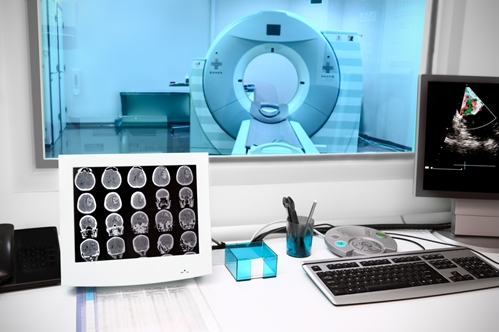For the last few years, radiologists have been focusing on reducing patients’ radiation exposure without sacrificing image quality. Today’s CT scanners have expanding capabilities to optimize medical imaging performance, but still lack the full clinical advantages of safe and effective diagnostics.
According to AuntMinnie.com, presenters at the opening-day talk for the International Symposium on Multidetector-Row CT discussed the future of diagnostic imaging and the coming generations of scanners that will meet the needs of radiologists and patients. While the development of these machines has been robust, the next few years could see significant gains in efficient technologies, including:
- Dynamic bow-tie filters
- Advanced reconstruction techniques
- Energy-discriminating photon-counting detectors
“The question for this talk is, is there some kind of design that can address some of the limitations [of current scanners] and what might we gain from it?” said Norbert Pelc, S.c.D., chair of the department of bioengineering at Stanford University, quoted by the news source. “[The talk was] not intended to describe the next generation of scanners produced by the vendors, but maybe the one after that.”
As CT scanners improve, they will boast more efficient components that address numerous pain points radiologists encounter throughout their workflows. These improvements will pave the way for clinical benefits that will not only bolster the performance of digital imaging specialists, but improve the patient experience.
Pushing for coverage of low-dose screenings
Recently, members of the U.S. Senate joined forces to support full Medicare coverage of low-dose CT lung cancer screenings for seniors who are at high-risk for the disease, DOTmed.com reported. Letters were sent to the U.S. Department of Health and Human Services and the U.S. Centers for Medicare and Medicaid Services, urging the organizations to consider the legislators’ proposals.
“This effort by Congress is an important step toward ensuring that patients at greatest risk for lung cancer can be diagnosed and treated in the early stages when they have a better chance of survival,” Douglas Wood, M.D., former president of the Society of Thoracic Surgeons, said in a statement.
According to the National Lung Screening Trial, screening high-risk patients with low-dose CT scans reduces the risk of death from lung cancer by 20 percent compared to chest X-rays. Following extensive research in December 2013, the U.S. Preventive Services Task Force recommended that annual lung cancer screenings become mandatory for high-risk patients.
The University of Alabama at Birmingham explained that there are notable benefits in low-dose CT scans, such as:
- Detection of lung nodules that may be malignant prior to the showing of symptoms
- Detection of coronary artery calcification, which may indicate risk of heart disease
Although lung nodules may result in false positives, the advantages of low-dose scans cannot be ignored. By reducing exposure and limiting repeated tests, physicians can ensure that their patients receive optimal care at minimal risk to their well-being.
Contact Viztek today for more information.
Ronny Bachrach
Latest posts by Ronny Bachrach (see all)
- Konica Minolta Debuts First-of-Its-Kind Digital U-Arm System at AHRA - July 27, 2016
- Researchers Detect Signs Of Stroke Risk Using MRI - June 27, 2016
- Imaging Biz: Q&A with David S. Channin MD: How to Make PACS Patient Centered - June 22, 2016










